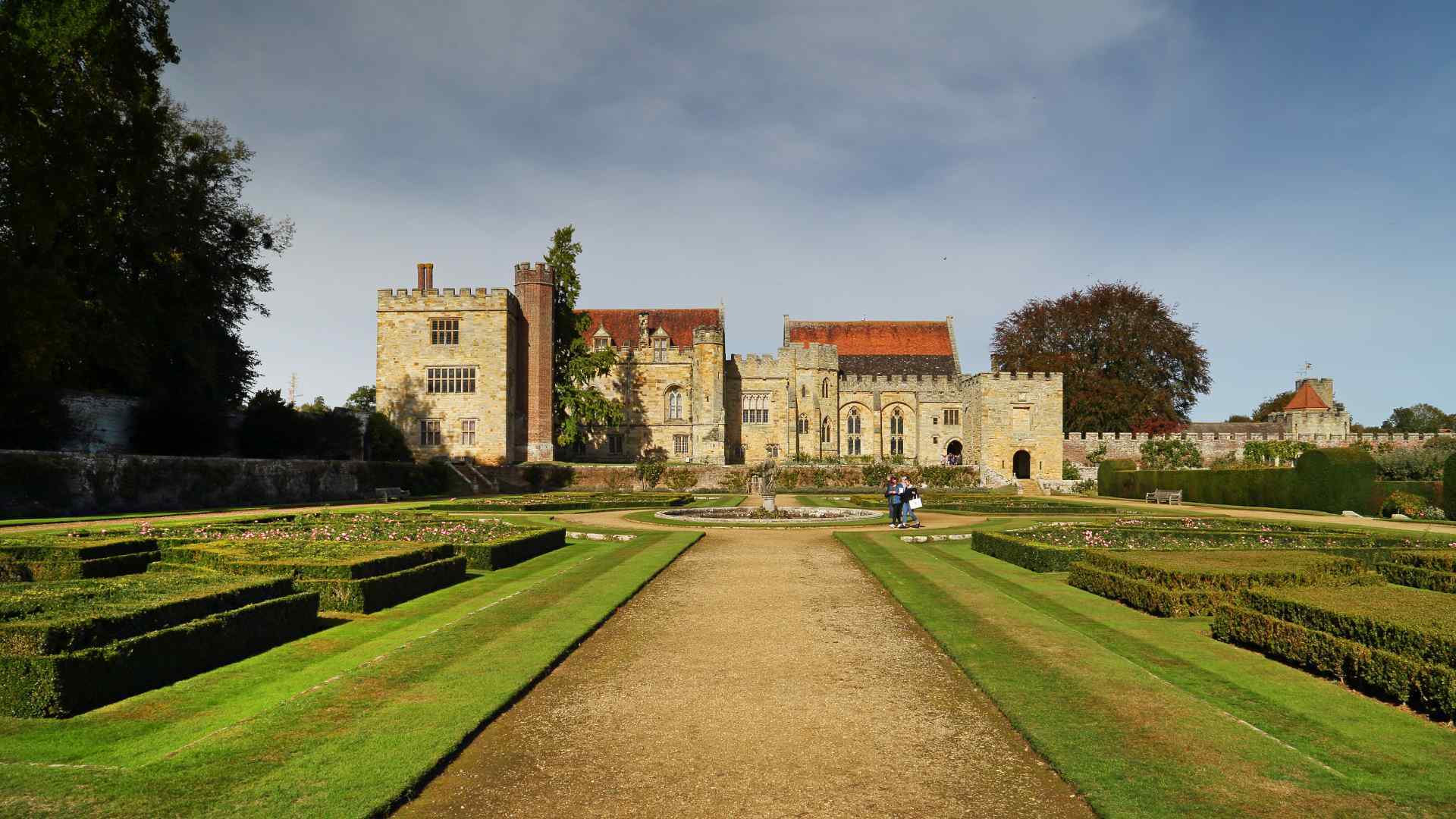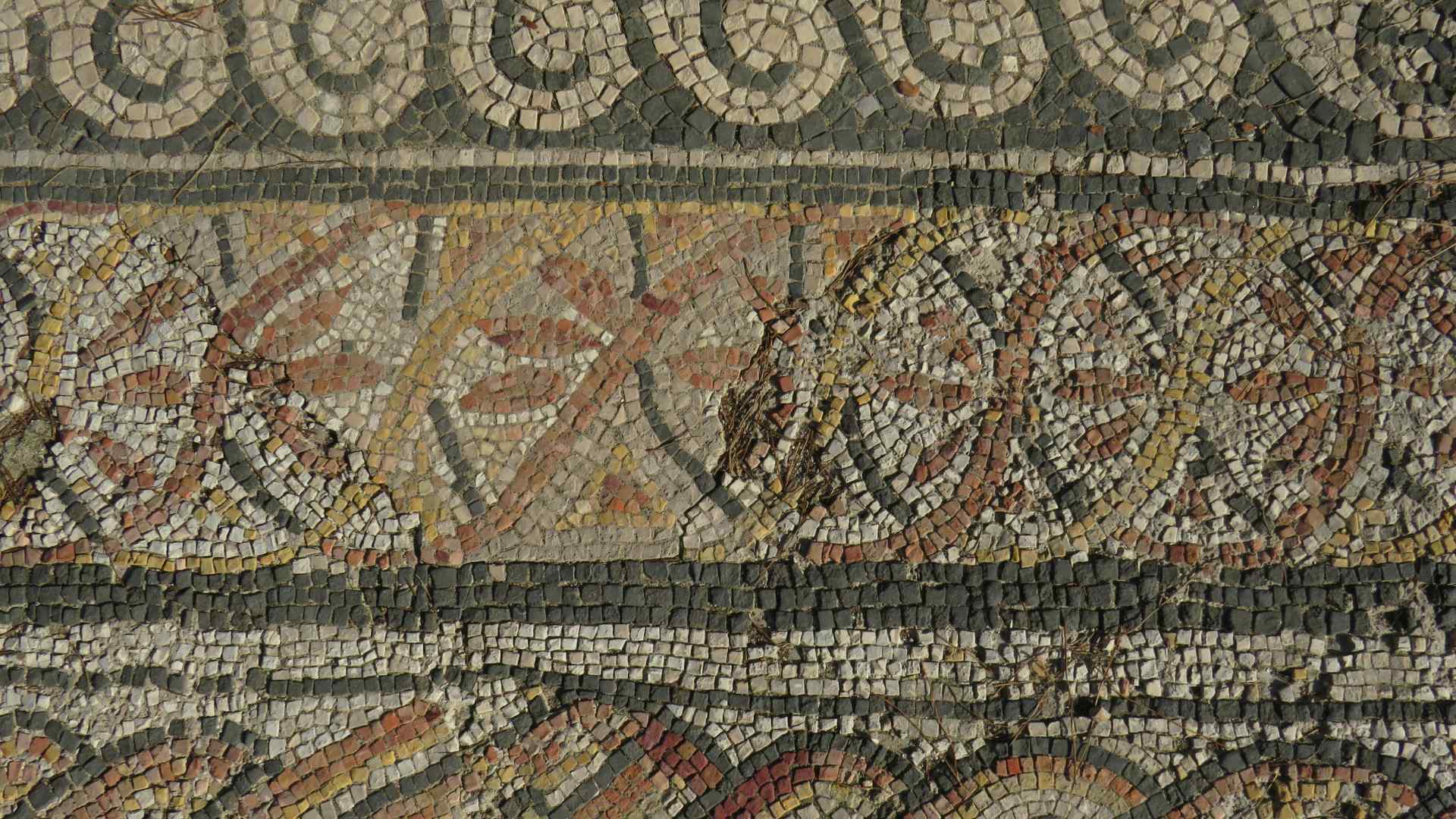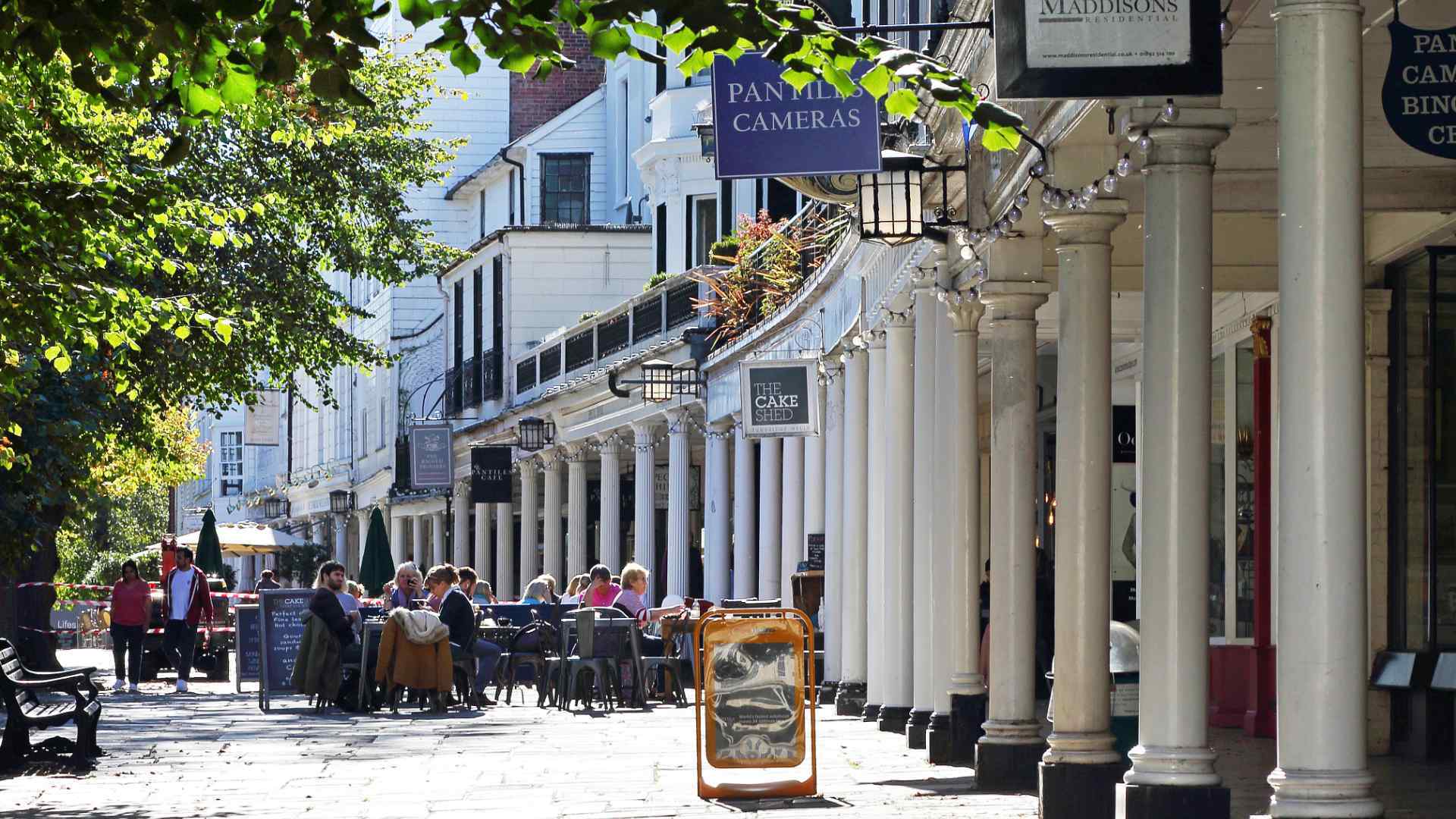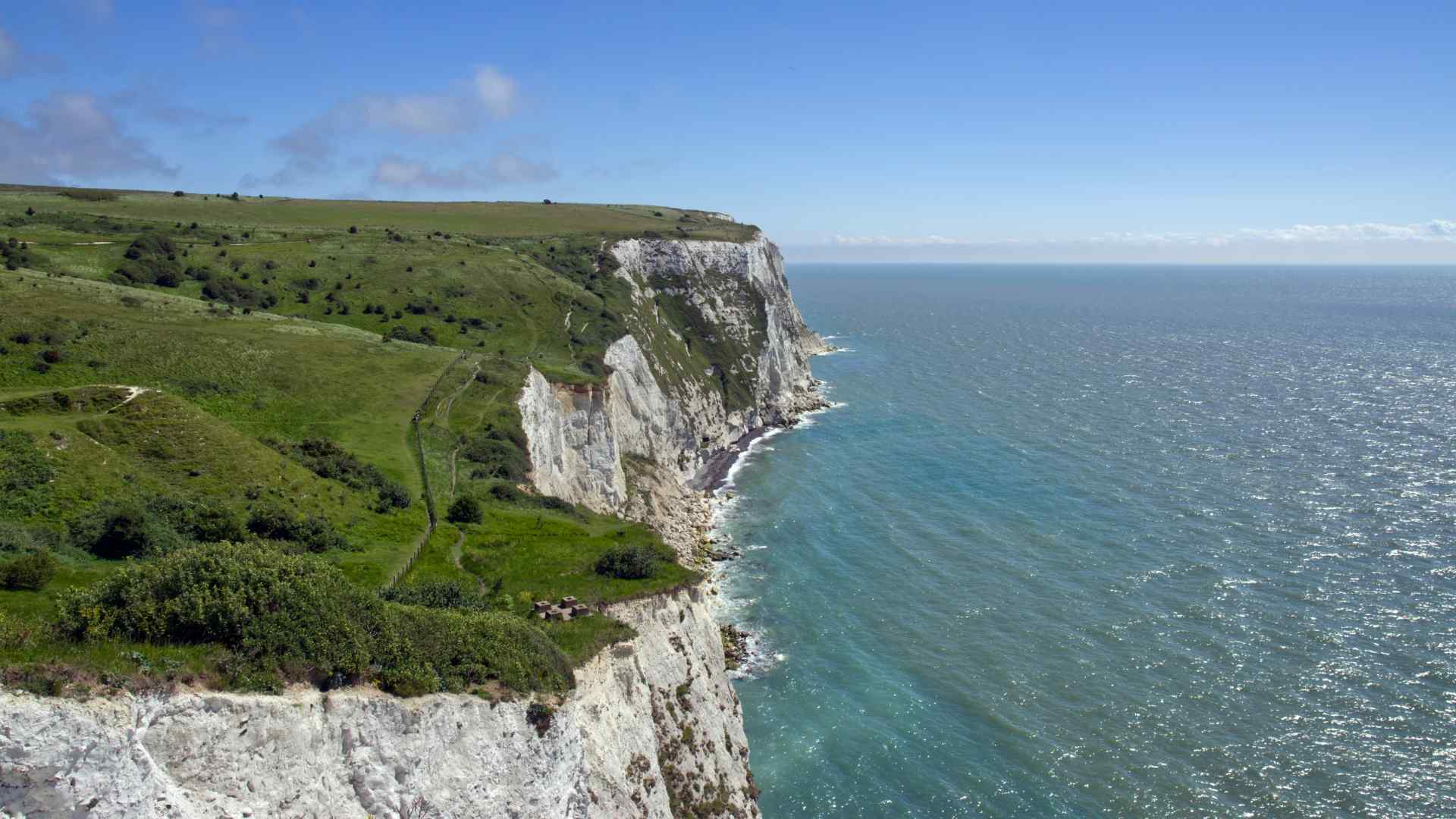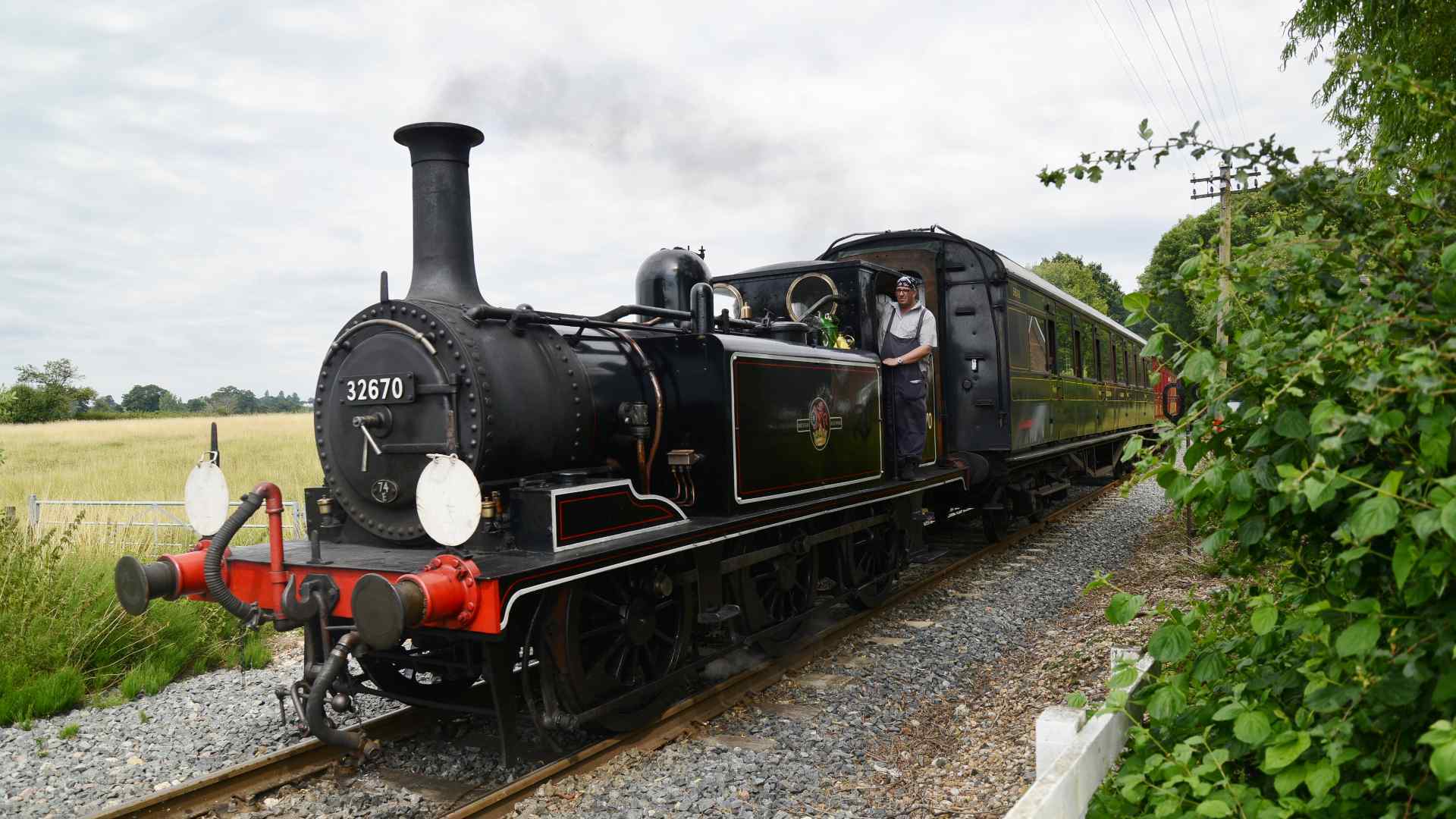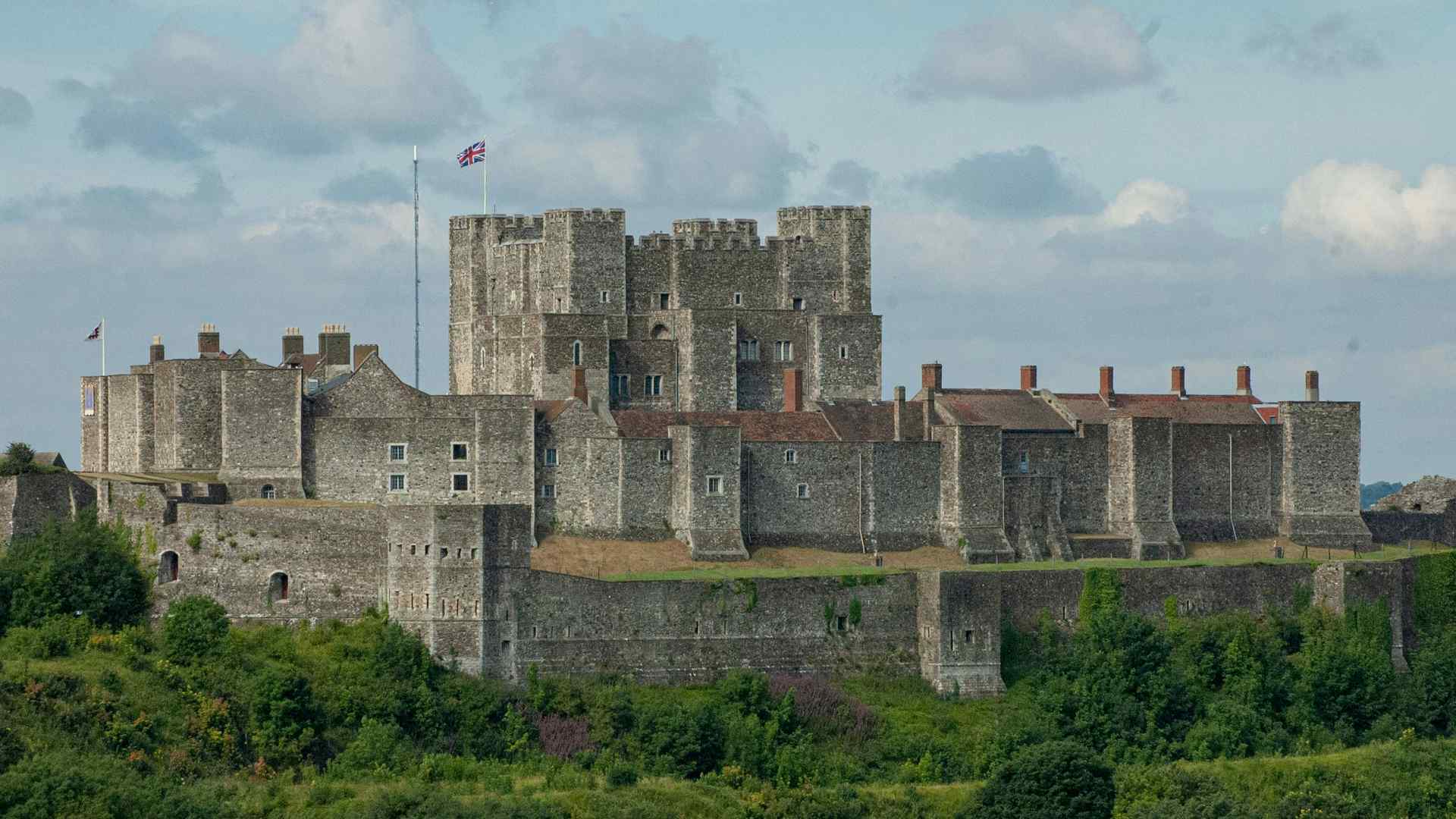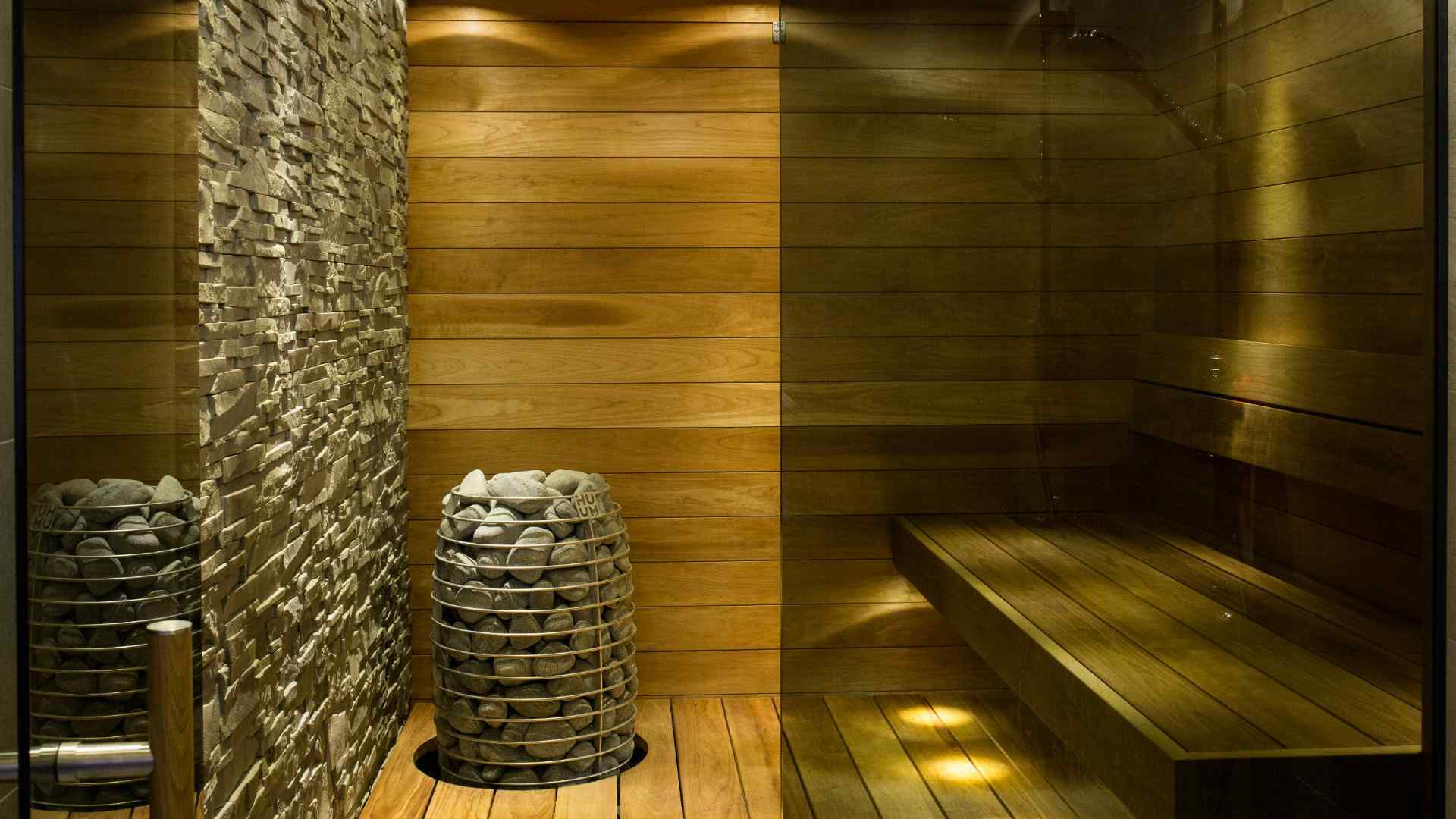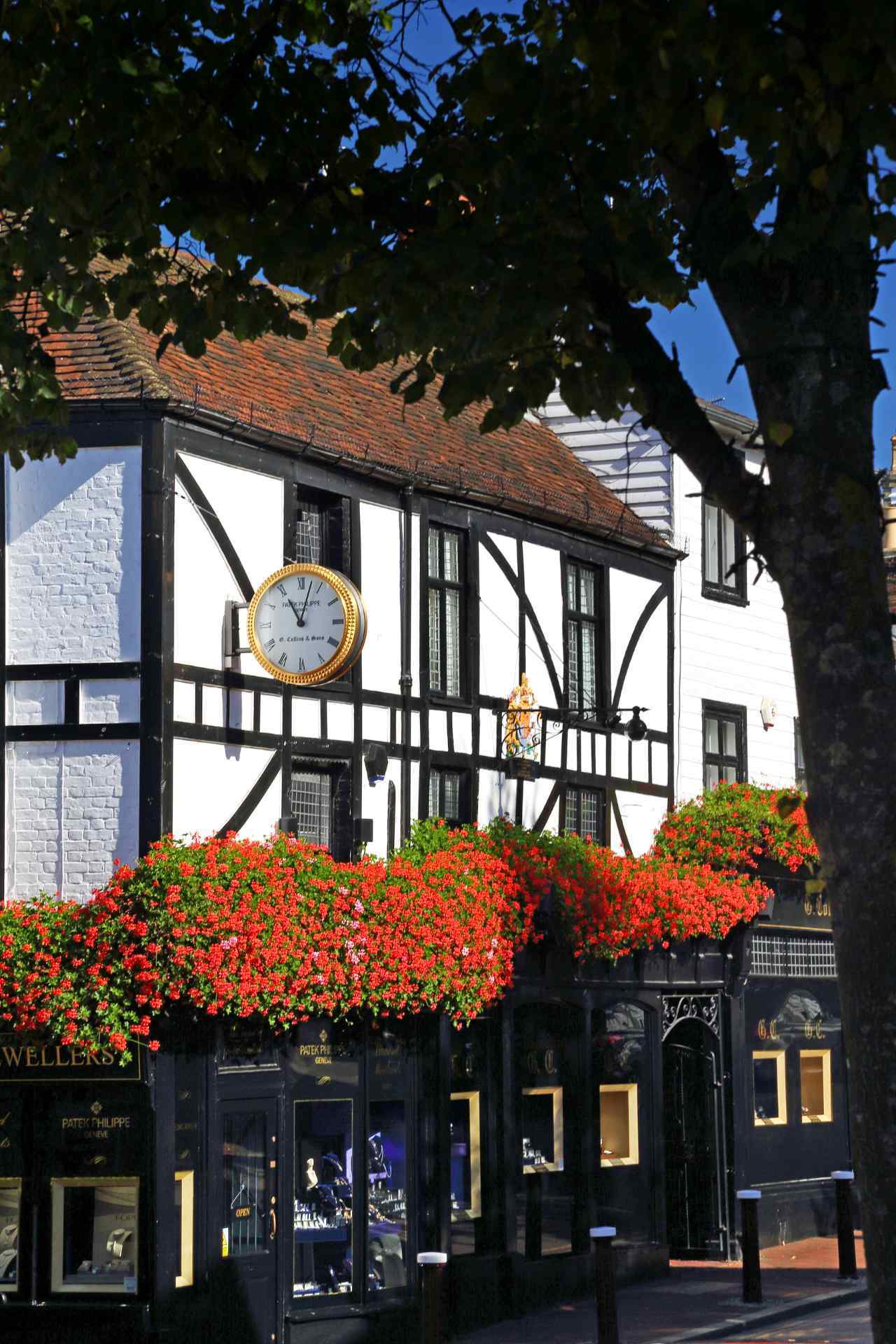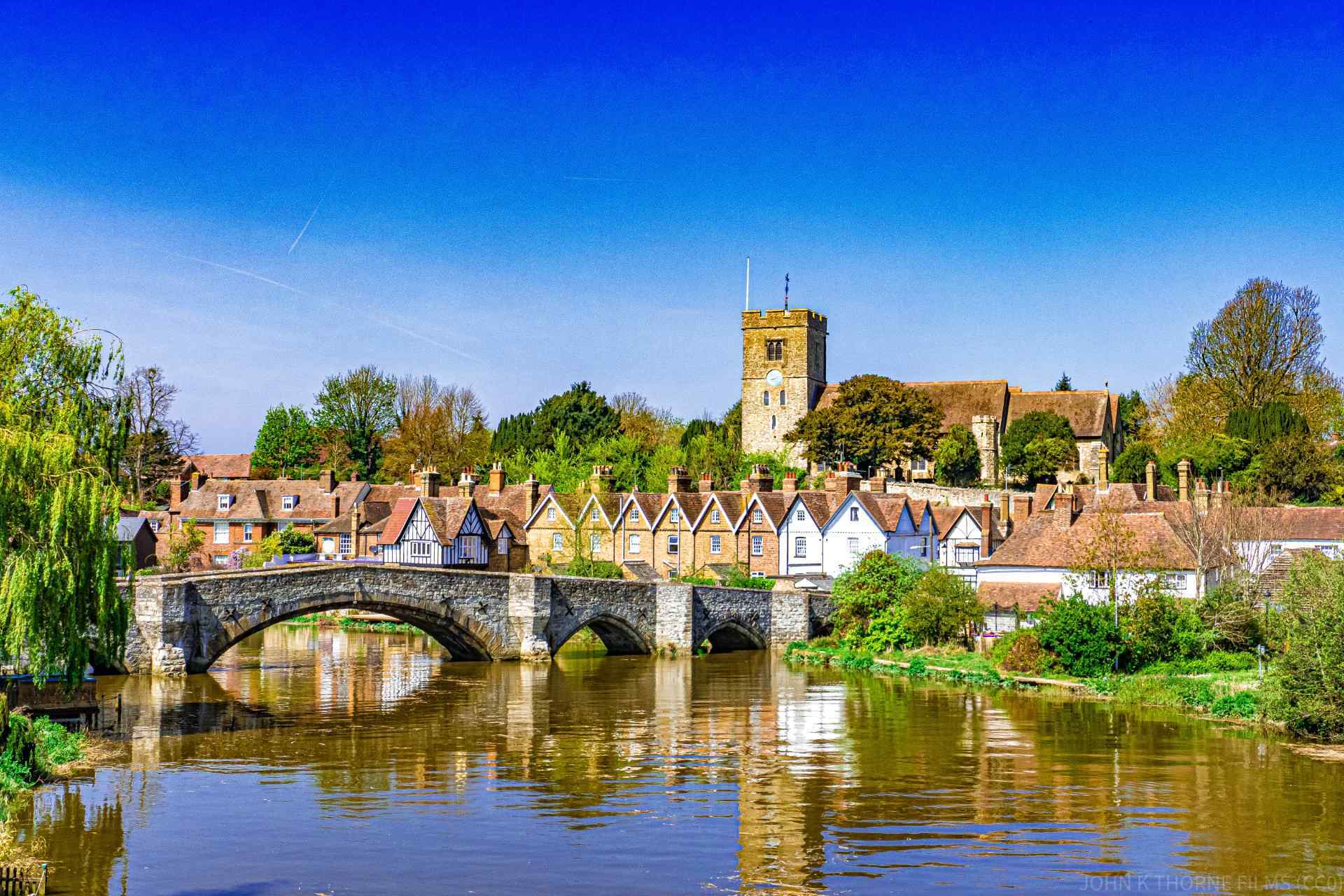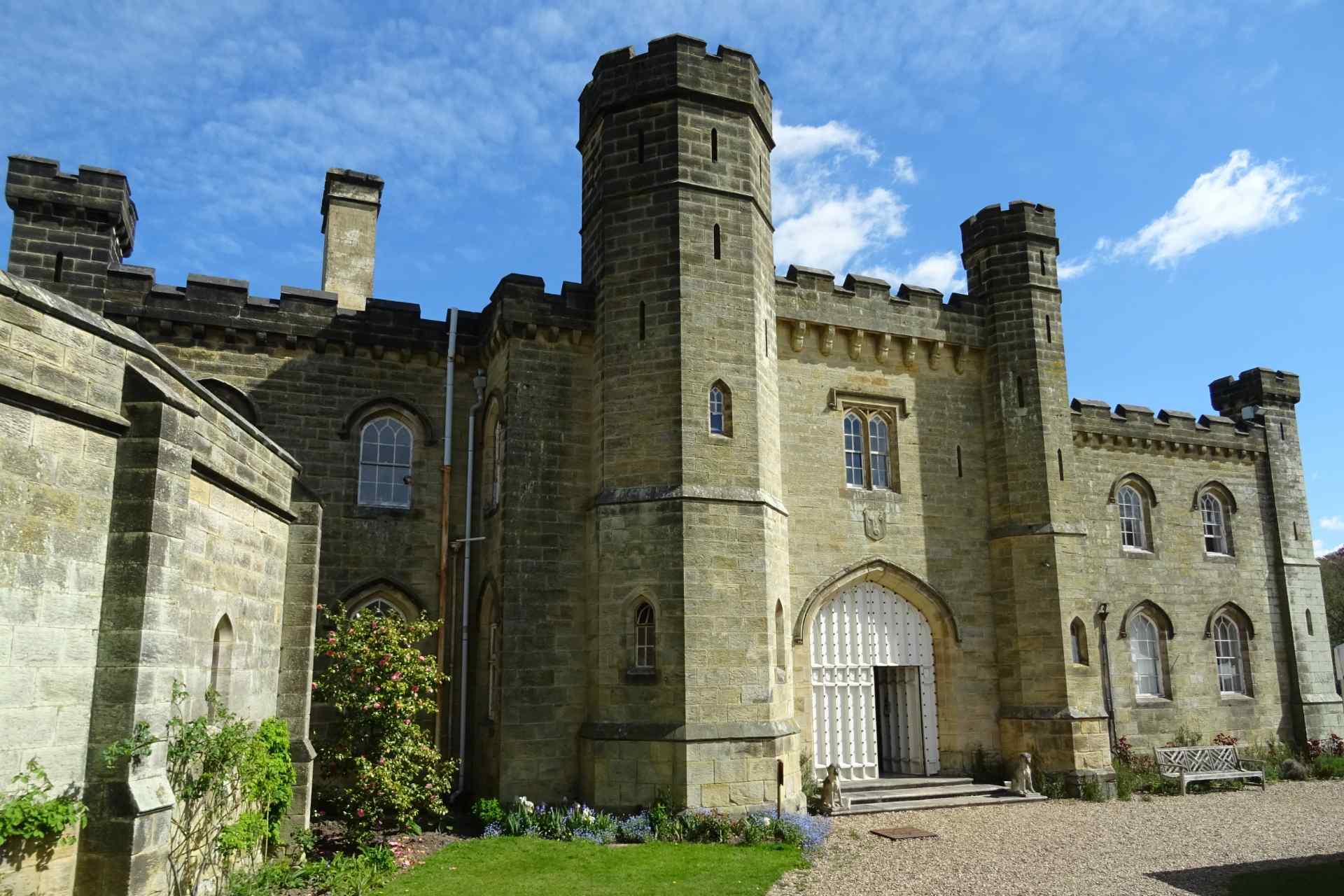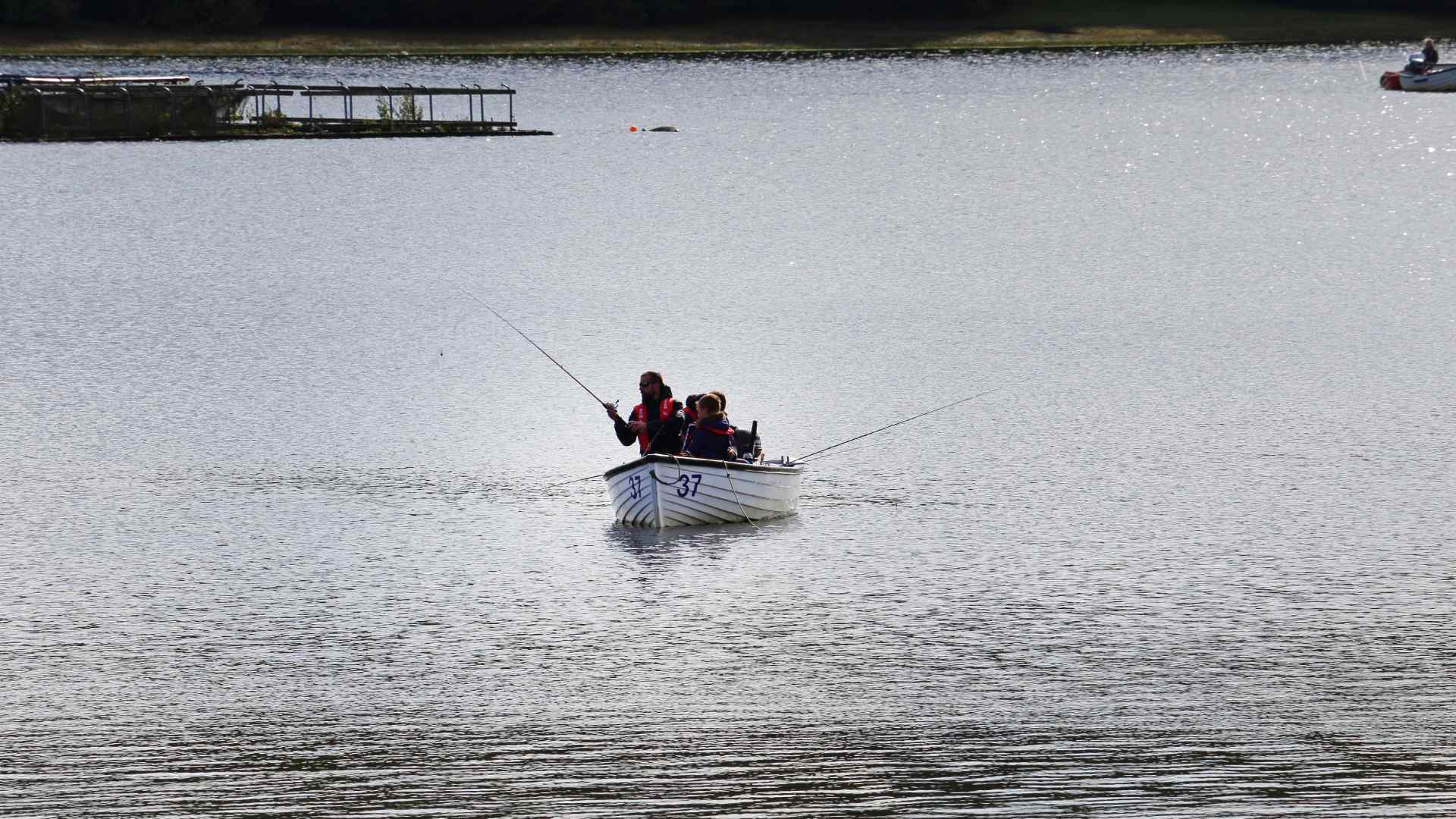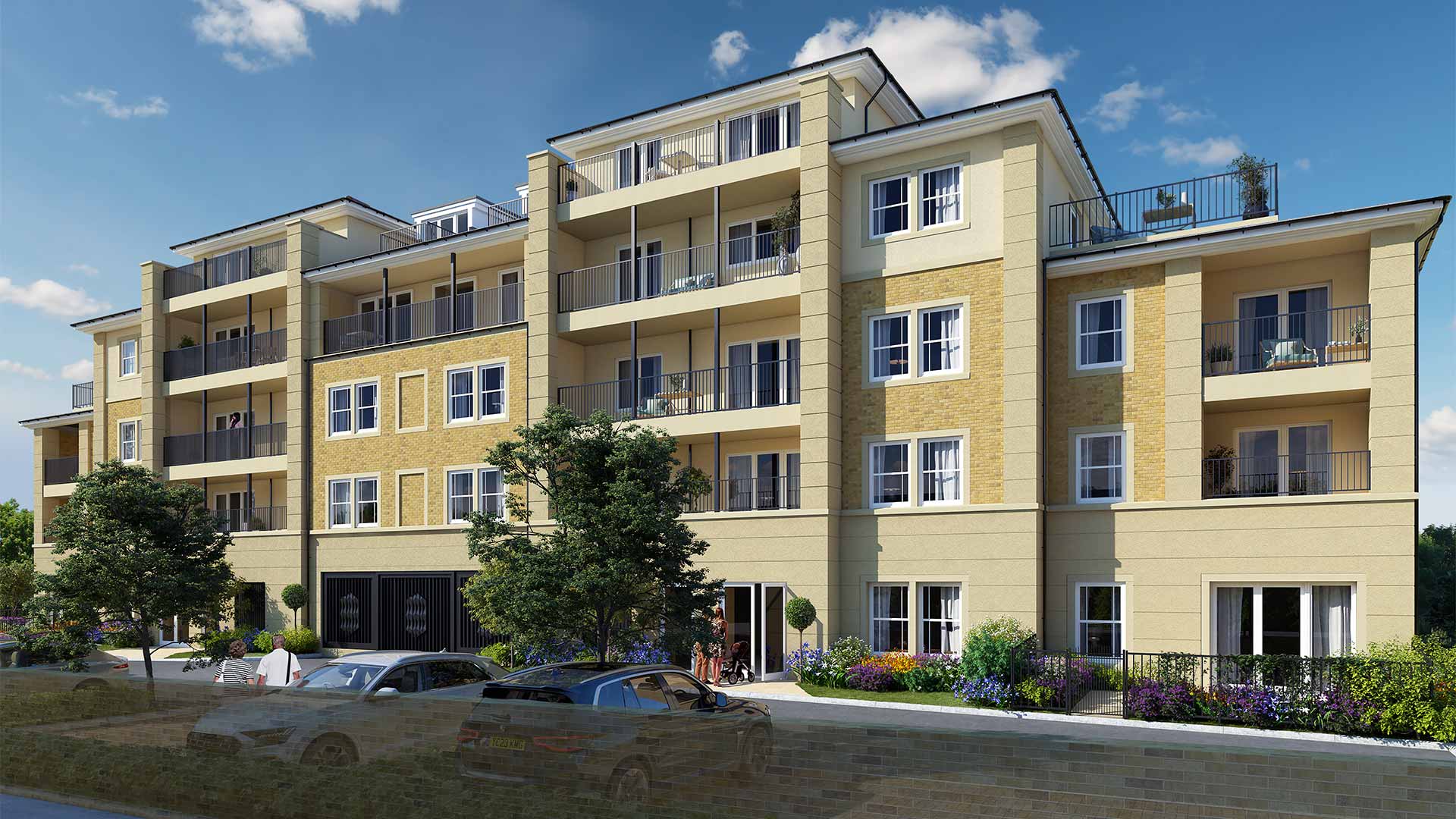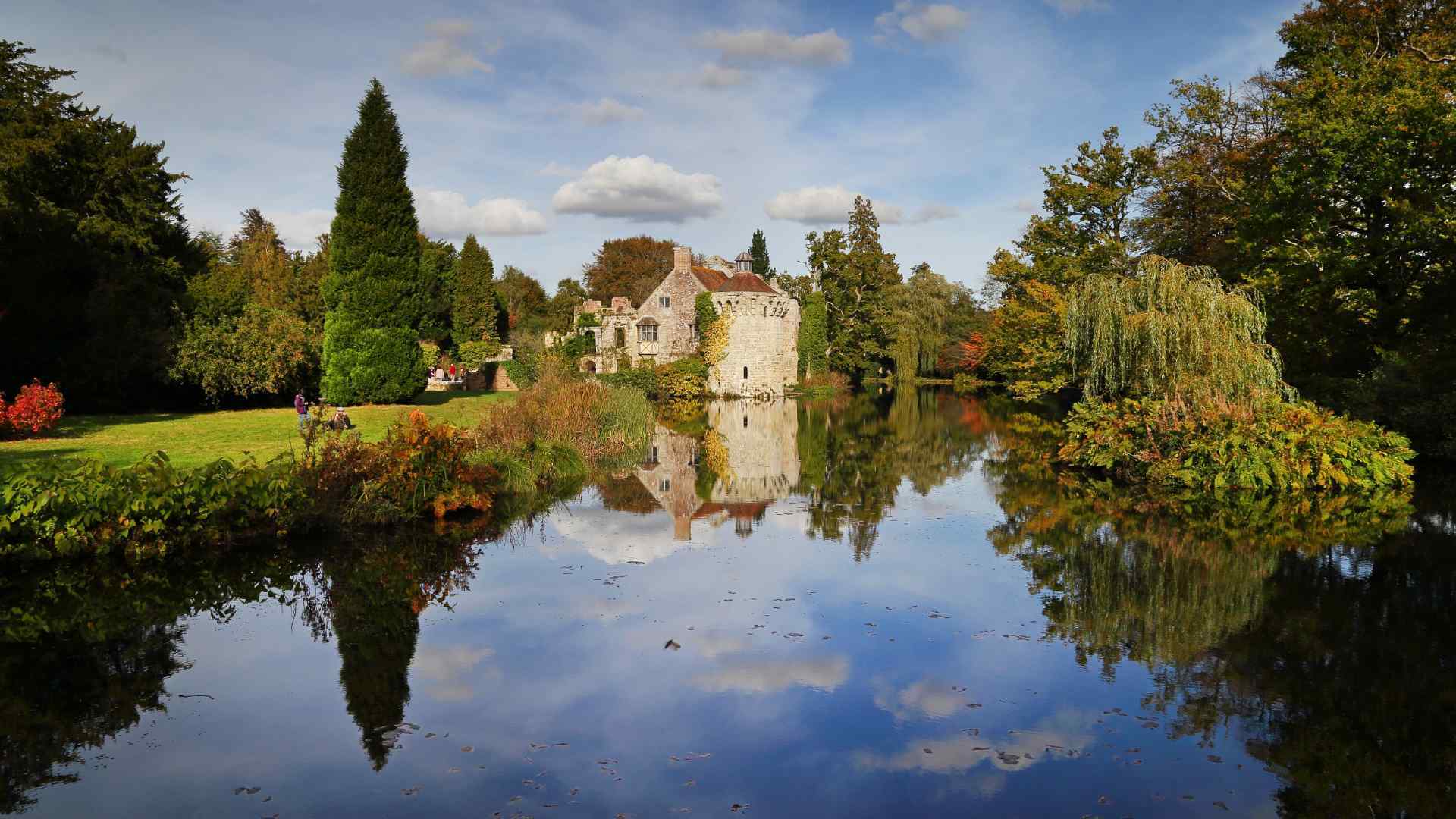
Scotney Castle, Kent
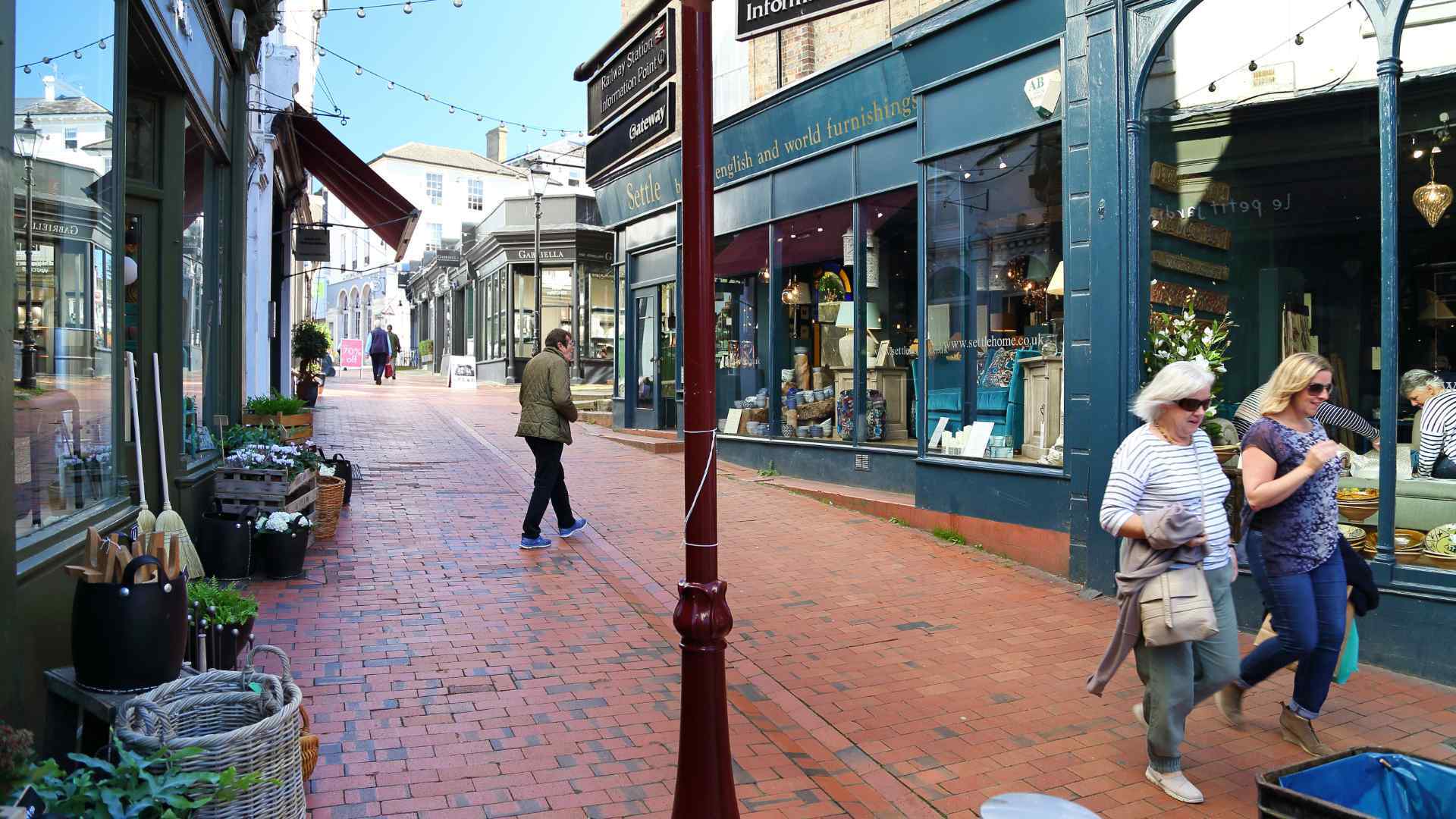
A street in Tunbridge Wells, Kent
Kent is a county known as the ‘Garden of England,’ home to the famous white cliffs of Dover, a beautiful coastline with sandy beaches, scenic countryside and a wonderful sense of history and heritage as well as plenty of opportunities to enjoy the county’s contemporary cultural scene. Taking the Eurotunnel from Folkestone means you could be in Calais within 35 minutes – and it’s equally quick and easy to reach the bright lights of London.
If you’re not familiar with Kent, the county is located in South-East England and it’s the closest county to continental Europe.
It borders Essex, which lies across the River Thames estuary to the north, East Sussex to the south-west, Surrey to the west and Greater London to the north-west.
1. With two areas of Outstanding Natural Beauty – the North Downs and the High Weald, as well as miles of open countryside, Kent is a wonderfully scenic area to explore on foot, by bike or by car.
2. Kent offers a 350-mile stretch of coastline taking in chalk cliffs, sandy beaches, shingle bays, lively coastal towns and wonderful views across the English Channel
3. Kent’s rich history dates back more than 2,000 years and the county hosts a wealth of historic attractions from castles, historic manors and stately homes to cathedrals and maritime museums.
4. For those in search of retail therapy – Kent has it all from High Street shopping to chic boutiques and designer outlets.
5. Kent is home to a host of delightful towns and picturesque villages and great places to visit – and whichever you visit, you’re never far from a beauty spot.
6. There are so many sporting and leisure opportunities in Kent. The coastline, cliffs, beaches and bays are ideal for those who enjoy watersports, fishing or birdwatching. 10 of the country’s leading golf courses can be found nestling in the Kent countryside – including championships links, parkland and downland courses.
7. Kent is a foodie’s paradise with over 50 farmers’ markets. Seafood offerings range from Whitstable oysters to Dover Sole – and everything in between. As you’d expect from the ‘Garden of England’ the gentle climate and fertile soil ensure that the county produces some of the best apples, pears and cherries.
8. The county offers plenty of opportunities to ‘get away from it all’ and relax – with peaceful places to enjoy afternoon tea or to treat yourself to a spa break.
9. The county offers excellent transport links – road, rail, sea and air. You can be in Calais in 35 minutes via the Eurotunnel from Folkestone.
Scotney Castle, Kent
A street in Tunbridge Wells, Kent
With over 2,000 miles of tracks and pathways, it’s easy to explore the Kentish countryside. Stretching from Farnham in Surrey to the White Cliffs of Dover, the North Downs area is popular with walkers and cyclists.
Explore the riverbanks of the rivers Darent, Medway or Stour or climb Toy’s Hill to take in stunning views across the Kent countryside. Kent is also home to England’s fourth largest Area of Outstanding Natural Beauty – the High Weald. This is a medieval landscape of heathland, ancient woodlands and meadows accessed by a network of ridge-top paths and sunken tracks, edged with trees, hedges and banks, rich with wildflowers. Lovers of AA Milne’s ‘Winnie-the-Pooh’ stories will enjoy a visit to the Ashdown Forest, in East Sussex, just over the Kent border. The wooded slopes and open heathland of this ancient area were the inspiration for the Hundred Acre Wood – and if you’re heading to the forest, here are some examples of things to do in Ashfown Forest.
Kent’s three coastlines provide over 350-miles of sand, shingle and marshland. Here, we list just a few of our favourite areas to enjoy all year-round.
Botany Bay is the most northern of the seven bays in Broadstairs, so named because local smugglers captured on the beach were deported to Botany Bay.
Here you’ll find chalk cliffs, golden sands and pretty rock pools left by the tide. This is a great place to build sandcastles, fly kites, kayak, canoe, body board or hunt fossils.
It’s popular with swimmers – and the RNLI lifeguard service is on hand during high season. Sadly, you’ll have to leave the dog at home during the summer months as dogs are banned during the daytime from May to September.
If you prefer to take the dog, head to the Viking Coastal Trail or the Kent Coastline Walk and simply enjoy the views over Botany Bay.
This beautiful beach stretches from Dungeness Point to Romsey in the north. With a long stretch of soft sand and safe swimming waters, it’s popular with visitors of all ages.
At low tide, the water goes out almost half a mile and the beach’s conditions make it a perfect location for kite-flying, sailing, windsurfing, kitesurfing and kiteboarding. Running along almost the entire length of the beach, The Greatstone Dunes are a Site of Special Scientific Interest with rare plant species and a population of small animals and insects.
The beach at the horseshoe-shaped Viking Bay is the most popular in the Broadstairs area – and this was where Charles Dickens holidayed. In fact, he wrote David Copperfield at Bleak House, which overlooks the small harbour at the northern end of the beach.
At Viking Bay Beach, you’ll find changing huts, a promenade, beachside shops and cafes and, in summer, there’s a lifeguard service.
Again, dogs are not allowed on the beach during the daytime from May to September. If you want to go into Broadstairs town, there’s a cliff-side elevator at the southern end of the beach so you don’t have to face the climb.
Margate Main Sands is a ‘traditional’ British beach – with a tidal pool, children’s rides, amusement arcades and plenty of golden sand to make sandcastles.
Just a short walk away, there’s Margate Old Town with restaurants, bars and seafood stalls – and the grandchildren will love Dreamland Amusement Park. If sitting on the beach isn’t your idea of fun, take the four-mile Turner and Dickens Walk and discover more about JMW Turner’s Margate and Charles Dickens’ Broadstairs.
This rural beach is located about two miles from Sandwich.
There’s a steep shingle beach towards the south of a long sandy bay which lies adjacent to famous links golf courses. At the northern edge of the beach is the River Stour Estuary separating Sandwich Bay from the Isle of Thanet – and here you’ll discover Pegwell Nature Reserve and salt marsh.
As a private estate, Sandwich Bay is closed to all visitors for one day each year and there’s an admission charge at both entry points from Sandwich or Deal but it’s a lovely, quiet and secluded place, popular with ramblers, dog walkers, fishermen and bird watchers.
Image above: Penshurst Place, Penshurst, Kent
Kent has more historic houses and castles than any other county. Its strategic position on the coast, just across the Channel from Continental Europe, ensured it played an important role in the defence of the nation and, as such, it has a rich maritime history and a wealth of castles.
Just a day’s journey from London on horseback or by coach or carriage, the Kent countryside offered the aristocracy a retreat from the hustle and bustle of the capital. Here are just a few of the historic venues that Kent has to offer today’s visitors:
Scotney Castle, a fortified manor house, was built in around 1380 by Roger Ashburnham.
Today, it is possible to see the remnants of the original house including a ruined gatehouse and a round tower rising from a lake-like moat. Just up the hill from the castle is a mansion house, sometimes called Scotney New Castle, built by the Hussey family between 1835 and 1843 in the Tudor Revival style.
In 1836, Edward Hussey created the gardens we see today having been advised by the landscape designer, WS Gilpin. He selectively demolished the walls of the original castle leaving a fairytale ruin. Modern visitors can explore the treasures of the Victorian mansion. run by the National Trust, relax in the gardens or explore the 770 acres of woodland. There’s a tearoom, picnic area and visitor shop selling local produce.
Churchill’s house in Kent is now preserved by the National Trust – and is one of the most visited historic sites.
Bought by Churchill in 1922, it was his main home during the 1920s and 1930s. Costly to run, it was bought for the National Trust by a group of Churchill’s friends and supporters in 1946 on the condition that Churchill and his wife could live there for the rest of their lives.
When Churchill died in 1965, Lady Churchill passed it over to the National Trust. A visit to Chartwell reveals a large collection of Churchill’s paintings and the rooms remain as they were during Churchill’s occupation. Outside, there’s a lovely hillside garden with fantastic views.
Set in the heart of Kent’s last remaining medieval deer park, Knole is one of England’s most important, complete, historic houses.
This 500-year-old house, once a palace, was owned by historically important figures from archbishops to the Tudor royals. The state rooms and galleries house royal Stuart furniture, textiles, portraits, tapestries and rare silver furnishings. In addition to the 15 newly conserved historic rooms, the National Trust has a Conservation Studio at Knole.
This historic house with medieval origins was home to writer, Vita Sackville-West and her husband, author and diplomat, Harold Nicholson – and the house is still partially occupied by the Nicholson family.
The first dwelling to have been built is thought to be a timber-moated house built at the end of the 13th century and visited by Edward I in 1305. Following centuries of habitation and expansion, Elizabeth I visited the house in 1573 but the building went into decline after the Civil War.
Used as a prisoner of war camp during the Seven Years’ War, the French soldiers gave Sissinghurst the name ‘castle.’ Materials from the demolished manor house were used for local construction during the 19th century but, in 1928, when the property was marketed, Vita Sackville-West, who was denied of her ancestral home in Knole and viewed Sissinghurst as a substitute (connected to her ancestor, Thomas Sackville) rescued the Tudor Manor’s remains, residing in the South Cottage and dining and entertaining in the library and writing in the dual-turret tower.
The gardens, including the walled garden full of sculptures, were opened to the public for several days a year from 1938 which helped pay for their upkeep. In 1968, after Harold’s death, the family passed the property to the National Trust who allow the Nicholson descendants to live in the left wing of the house in perpetuity.
The original medieval house at Penshurst Place is one of the most complete surviving examples of 14th century domestic architecture in England.
Once home to the Elizabethan poet, courtier and soldier, Sir Philip Sidney, part of the house and gardens are open to the public – though do check opening times because of winter closures. Visitors can view the State Rooms and the State Dining Room – the latter being part of the medieval building containing family portraits, furniture and ceramics.
The Queen Elizabeth Room, The Tapestry Room, the Long Gallery and the Nether Gallery are also open to the public. The Toy Museum is a fascinating glimpse into the world of childhood with dolls, doll houses, teddies, toy soldiers and toys from the past. In the Queen Elizabeth Room, there’s a green stool on which Queen Victoria was seated when pronounced Empress of India in 1876.
Set in 125 acres of beautiful grounds with a lake, Hever Castle was the childhood home of Anne Boleyn.
Built in around 1270 and surrounded by a moat, the castle is reputed to be one of the most haunted sites with ghostly apparitions including Anne Boleyn herself, her father, a drummer boy, a maid and a former resident who fell from a window.
Inside the castle, you can discover fine furniture, tapestries, antiques and one of the country’s best collections of Tudor portraits. This small, romantic castle was restored and extended by William Waldorf Astor in the early 20th century and guests are able to stay in the castle’s extension. The grounds are glorious with a Pompeiian Wall and classical statuary in the Italian Garden, a Tudor Garden, a Rhododendron Walk, a Rose Garden with over 5,000 roses and a giant topiary chess set.
Said to be the most beautiful castle in Kent, Leeds Castle dates back to 1119.
From its origins as a fortification, it was one of the royal palaces of Edward I and Queen Eleanor. Today, visitors can explore the garden, get lost in the maze, play adventure golf and enjoy bird of prey displays as well as exploring the many rooms open to the public including those of Lady Baillie, the last private owner of the castle who purchased it in 1926.
There are also 500 acres of gardens and parkland to explore – but if you’re not up to following the circular walking routes, there’s the castle train and Black Swan Ferry. Golf enthusiasts may wish to take advantage of the historic nine-hole golf course at Leeds Castle Golf Club.
Ightham Mote is a hidden gem – a 14th century moated manor house surrounded by beautiful gardens, lakes and woodland walks.
It is one of the oldest medieval manor houses to survive in England. First built in around 1340, it was altered and extended in the late 15th, 16th and 17th centuries. Built around an open courtyard and surrounded by a moat, the house traces the changes in architecture and interior – with a Jacobean staircase and chimney pieces, Palladian and Gothick windows and 18th century hand-painted Chinese wallpaper and ‘Old English’ style panelling.
A place of pilgrimage for centuries, Canterbury Cathedral remains a ‘must’ for modern day visitors to Kent.
With a site dating back to the 6th century and a crypt dating back to the 12th century, the cathedral (where Thomas Becket was murdered) is today a UNESCO World Heritage Site.
Notable figures buried in the Cathedral include Henry IV and Edward the Black Prince – but the stained-glass windows, stunning ceilings, cloisters and picturesque gardens add to the cathedral’s charm and interest.
There are so many fascinating museums in Kent ranging from the Kent Life Vintage Village with its historical buildings, oast houses and hoppers’ huts to the maritime collections at The Historic Dockyard, Chatham with collections brought together by the Dockyard, National Maritime Museum and Imperial War Museum. Canterbury Roman Museum takes you down to the level of the Roman town where you’ll discover reconstructions, remains of houses and mosaics.
At Dover Museum, you can view the Bronze Age Boat, which is the world’s oldest seagoing vessel as well as Saxon jewellery. For more information on Kentish museums, take a look at the Visit Kent website.
Opened in 1999 in a former chalk quarry, Bluewater offers a mix of renowned local and international brands from the worlds of fashion, fragrance, technology and toys. When shoppers need sustenance, there are 50 places to eat and drink offering a choice of cuisines from around the world as well as quick bites and fast food.
Visit the Bluewater Shopping Centre website
The Pantiles is an exceptionally stylish area to shop, linked to the old High Street by the cobbled Chapel Place. This historic destination provides a variety of independent specialist shops, chic boutiques, family-owned businesses, art galleries and regular farmers’ and crafts markets. It’s a lovely place for retail therapy all year round – whether you’re looking for fine furniture, oriental rugs or something special to wear. The Pantiles is renowned for its individuality, customer service and well-preserved Georgian promenade.
If you’re looking for designer goods at discount prices, McArthurGlen’s Ashford Designer Outlet is located just five minutes’ walk from Ashford International Station. The Outlet has over 100 popular brands and all with up to 60% off the RRP. When you need something to eat, there’s a selection of restaurants including the popular chains – Pizza Express and Wagamama’s.
Visit the Ashford Designer Outlet website
The White Cliffs of Dover are a national icon and one of our country’s most spectacular natural features offering dramatic clifftop walks and beautiful views.
Take a look at the White Cliffs Walking Trail but make sure to visit South Foreland Lighthouse for some of the best views and call in to the Fan Bay Deep Shelter, built to accommodate soldiers during World War II.
Based in Tenterden, the Kent & Sussex Railway is a heritage railway offering visitors the chance to travel on steam and diesel-powered trains through the Rover Valley in the Wealden countryside.
If you’re in the Dover area, Dover Castle is a fascinating place to visit. Created by Henry II as a medieval royal palace, it has played a strategic role in English history.
Today, you can view artefacts from the time of the Romans to the Cold War. Visit the 12th century court and enjoy the views of Dover from the roof of the Great Tower. Tour the Great Hall, guest rooms, private chambers, armouries and the kitchens.
Follow the operation to rescue 300,000 British and Allied Troops in the film, audio and archive photography of the 1940 Miracle of Dunkirk exhibition.
Located in Smarden, the Big Cat Sanctuary breeds and protects endangered cats.
You can book a Big Cat Encounter, joining professional guides on a tour to view the resident cat collection and learn about the conservation needs of cat species – as well as getting up close to the animals. Visitors over the age of 16 may be able to hand-feed the big cats.
It’s possible to experience what it’s like to be a ‘Ranger For A Day’ – joining the expert keepers and helping them take care of the cats. There are photography workshops and, when you’ve worked up an appetite, there’s the Paul Hollywood Afternoon Tea in the conservatory overlooking the Asiatic lion enclosure – with recipes created exclusively by Paul Hollywood.
A visit to the Diggerland theme park is a fabulous experience for children and adults.
Here, it’s possible to ride, drive and operate real diggers, dumpers and other full-size construction machinery.
There are 20 different rides and drives and plenty of other interesting things to do and see, including indoor and outdoor play areas – but check the height restrictions before taking the grandchildren.
With a wealth of farms – and local farm shops – a coastline providing fish and other seafood, Kent is a food lovers’ paradise.
This, and close proximity to London, are just a couple of reasons why so many chefs run restaurants in Kent. There are too many places to mention but for an excellent guide to eating out in Kent take a look at this Kent Food Guide.
Set in 17 acres of beautiful Wealden countryside, Reynolds Retreat is a country club and fitness centre providing a hydrotherapy pool, monsoon showers, steam and sauna bath, an ice fountain, a deep relaxation room and heated loungers. In the seven treatment rooms, you can enjoy a whole range of treatments from pedicures to massages.
Find out more about Reynolds Retreat
Famed for lovely, once-lost gardens and award-winning plant nursery, Reuthe’s offers a range of well-being events and days that make the most of the indoor pool and treatments from facials to massages.
Based in an elegant 18th century building, now a hotel, surrounded by 14 acres of lovely gardens, The Spa is just 15 minutes’ walk from Tunbridge Wells station. There are two gyms, a steam room, floodlit tennis court and a range of treatments including an Indulgence Experience which includes a massage, facial, two course lunch and glass of bubbly with time to enjoy the heated pool and sauna.
You need to be a member to enjoy the benefits of Natural Fit – which offers a range of classes and a state-of-the-art gym. Relax in the swimming pool with its hydro-jets, or in the hammam, sauna or steam room before choosing from a fabulous range of treatments by in-house therapists.
It’s easy to travel to Kent by road, rail or air and London is just 38 minutes away using Southeastern’s high-speed rail links. As the closest point to the Continent, it’s easy to travel abroad using Le Shuttle.
Southeastern operates the service between London and Kent including a high-speed service from St Pancras International. The service calls at Ashford International and Stratford International and numerous Kent locations including Canterbury, Folkestone, Margate, Broadstairs, Ramsgate and Dover. If you’re heading to Tunbridge Wells, the station is on the London Charing Cross/Waterloo/London Bridge line to Hastings and the journey takes between 40 and 55 minutes depending on whether it is a direct or stopping service. Other towns such as Canterbury, Ashford and Maidstone can be reached by changing at Tonbridge, which is just 10 minutes by rail from Tunbridge Wells.
Tunbridge Wells can be accessed from the north using the A21 trunk road which is mainly dual carriage between the M25 and the outskirts of town. The A21 continues south past Tunbridge Wells to Lamberhurst and Hastings. The A26 runs through the town centre, linking with Brighton and Lewes to the south and Tonbridge and the A21 to the north. To the west, the A264 provides connections to East Grinstead, Crawley and Gatwick Airport and to the east, the A264 becomes the A228 linking to Paddock Wood, Maidstone, Rochester and Strood.
Kent’s network of bus services is operated by Arriva and Stagecoach. Arriva’s network covers North and West Kent – calling at town centres and rural villages including Gravesend, the Isle of Sheppey, Maidstone, Sevenoaks, Tonbridge, Tunbridge Wells and Medway. There are bus services to Bluewater and to Ebbsfleet International.
Stagecoach operates mainly in the east and south of Kent with about 55 bus routes around Ashford, Canterbury, the Dover and Deal areas, Faversham, Sittingbourne, Maidstone, the Folkestone and Hythe area, Herne Bay, Whitstable and Thanet.
There are so many beautiful locations to visit in Kent – and here we highlight just a few.
Tunbridge Wells is an elegant town where you’ll discover glorious public parks and swathes of heathland, woodland and parkland sweeping down to the town centre.
Georgian grandeur is still evident in the town’s Pantiles shopping area, home to over 70 independent stores, art galleries, cafes, restaurants and bars each offering something special. Listen to live music, relax with a coffee in a pavement café or browse the designer boutiques. Just up the High Street, the Royal Victoria Place Shopping Centre and the pedestrianised Calverley Road Area host well-known brands and there’s a vast array of places to eat and drink.
Thackeray’s, set in a building once owned by the novelist, William Makepeace Thackeray, is popular – as is Sankey’s The Old Fish Market Champagne & Seafood Bar in the Pantiles. The Giggling Squid serves excellent Thai food at reasonable prices.
There’s also a wealth of well-known chain restaurants along with cafes and coffee shops. If you enjoy culture, the town has a museum, art gallery, a cinema, a well-stocked library and the Assembly Rooms – a theatre with a programme of music, dance, comedy and more.
The Trinity Theatre and Arts Centre, set in a converted church, hosts around 350 events a year including exhibitions, film, theatre and musical performances.
This is one of the prettiest Kent villages, situated on the River Medway and accessed by a picturesque 14th century, five-arched bridge.
A day out in Aylesford should include a visit to the Friars with its beautiful setting, chapels and peace garden – followed by lunch at Aylesford Pottery and Gallery, situated within the grounds of the Friars.
Kit’s Coty House and the neighbouring Little Kit’s Coty House are the remains of two megalithic dolmen burial chambers. Kit’s Coty is the larger of the two with three uprights and a massive capstone. The origins are unknown but these long barrows are believed to have been initially constructed during the early Neolithic period as communal burial sites. The open field where both are located offers fantastic views across the North Downs and Medway Valley.
Nestling near the River Eden, Chiddingstone is one of the oldest villages in Kent and one of the best-preserved Tudor villages in the country with well-preserved historic buildings, cobbled pavements and a narrow main street.
Chiddingstone is also unique in that, apart from the church and Chiddingstone Castle, the entire village is owned by the National Trust. The Castle Inn is a 15th century building, which became a hostelry in 1730 and the Church of St Mary the Virgin is perhaps the fourth church built on the site. It was almost destroyed by a lightning fire in 1624 and had a stone gazebo built in the churchyard by Henry Streatfeild in 1736 which leads down to the Streatfeild family vault.
Within easy reach of Chiddingstone, you’ll find several nature reserves including the Sevenoaks Reserve and Jeffrey Harrison Visitor Centre, Bough Beech Visitor Centre and Reserve and Chiddingstone Reserve, all operated by the National Trust. Of course, no visit to Chiddingstone is complete without a visit to the Tulip Tree café.
Whether you enjoy taking part in sports activities or just watching sport, you’ll have plenty of opportunities in Kent.
Golf enthusiasts will love the range of courses available throughout the county – there are over 80 in Kent. There are several golf courses in the Tunbridge Wells area alone – including the 100-year-old, 18-hole Nevill Golf Club, just five minutes’ drive from the centre of town, the Lamberhurst Golf Club and the Tunbridge Wells Golf Club. The Knole Park Golf Club in Sevenoaks and the Royal Ashdown Forest Golf Club are also on hand. Elsewhere in the county, you’ll find some superb golf clubs with glorious views – such as Leeds Castle Golf Club in Maidstone and Prince’s Golf Club in Sandwich Bay, which has 27 holes of championship links in three 9-hole loops.
Kent Cricket is based in Canterbury – and this is the place to head if you want to watch some first-class matches. Buying a club membership means you’ll have entry to all Kent home matches as well as other benefits. If you enjoy playing or supporting your local cricket team, there’s plenty of opportunity to do so. Most Kentish villages and towns have their own teams – there are several in Tunbridge Wells alone and the town hosts a fantastic Cricket Week during which Kent County Cricket Club play their home matches at Tunbridge Wells Cricket Club’s Nevill Ground. Whilst the Nevill Ground is used by the cricket club in the summer, during the winter it becomes the venue for Tunbridge Wells Hockey Club.
Anyone who loves boats will find somewhere to suit them in Kent – lakes, rivers, reservoirs or the sea. Tonbridge Town Sailing Club is located on the Haysden, a man-made lake by the River Medway, close to Tonbridge. Bewl Water, on the boundary of Kent and East Sussex near Lamberhurst, is a reservoir where you can sail seven days a week in all seasons. There’s also paddleboard memberships – and social events.
With three coastlines and diverse habitats, Kent is one of the best counties for bird watching in the UK. There are five reserves in the county as well as two dedicated bird observatories. Head to the North Kent marshes, the RSPB reserve on the shingle peninsula of Dungeness or the spectacular Elmley National Nature Reserve on the Isle of Sheppey, privately run and teeming with wildlife.
Set within landscaped gardens and overlooking Tunbridge Wells Common, this new retirement development is located within easy reach of The Pantiles and Tunbridge Wells High Street – and there’s a branch of Sainsbury’s within a few minutes’ walk.
The 40 one and two-bedroom apartments are energy-efficient, easily maintained and feature a high-quality specification. Each new home has outside space – either a terrace or a balcony as well as surface or undercroft parking.
11 December 2025
Why do we make New Year's resolutions? Explore their ancient history, the psychology behind them, and expert tips to set SMART…
Read more2 December 2025
Discover the best 2025 UK supermarket party foods — from pigs in blankets, bao buns and cocktail bites to vegan-friendly snacks…
Read more26 November 2025
There’s nothing quite like starting the festive season off with a visit to a Christmas market. Usually set in market squares or…
Read more